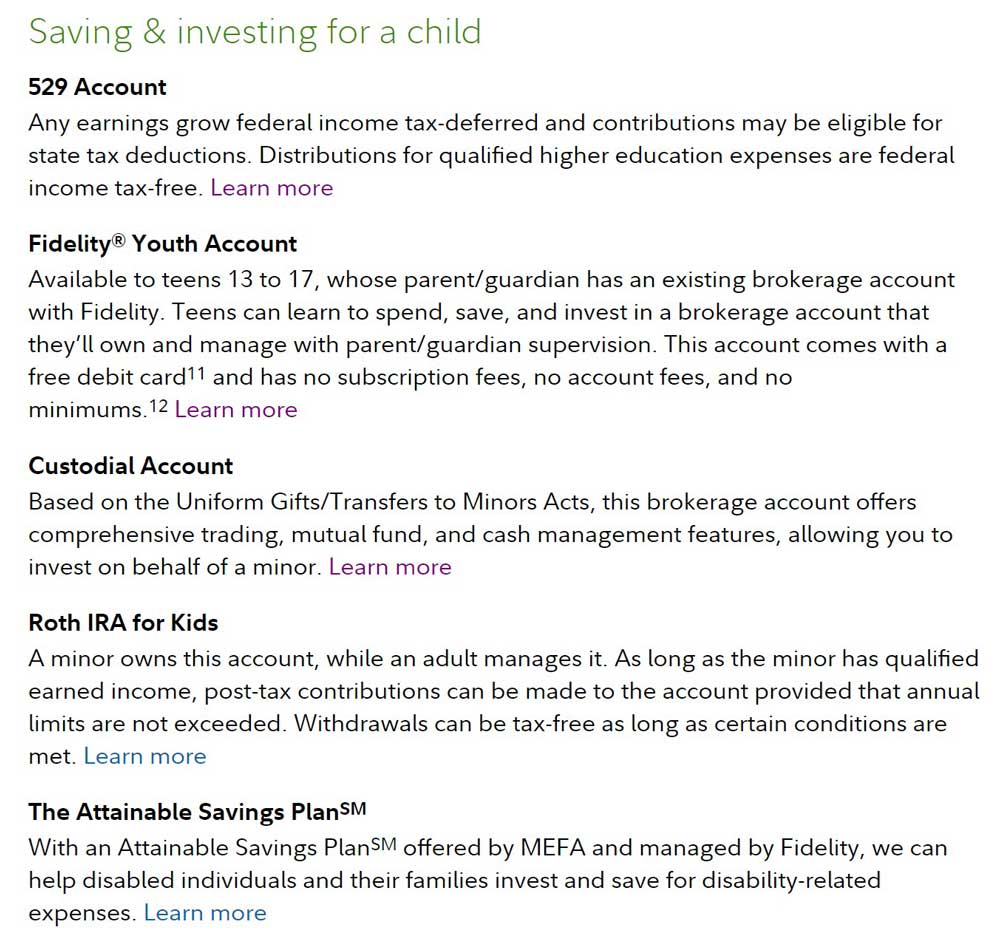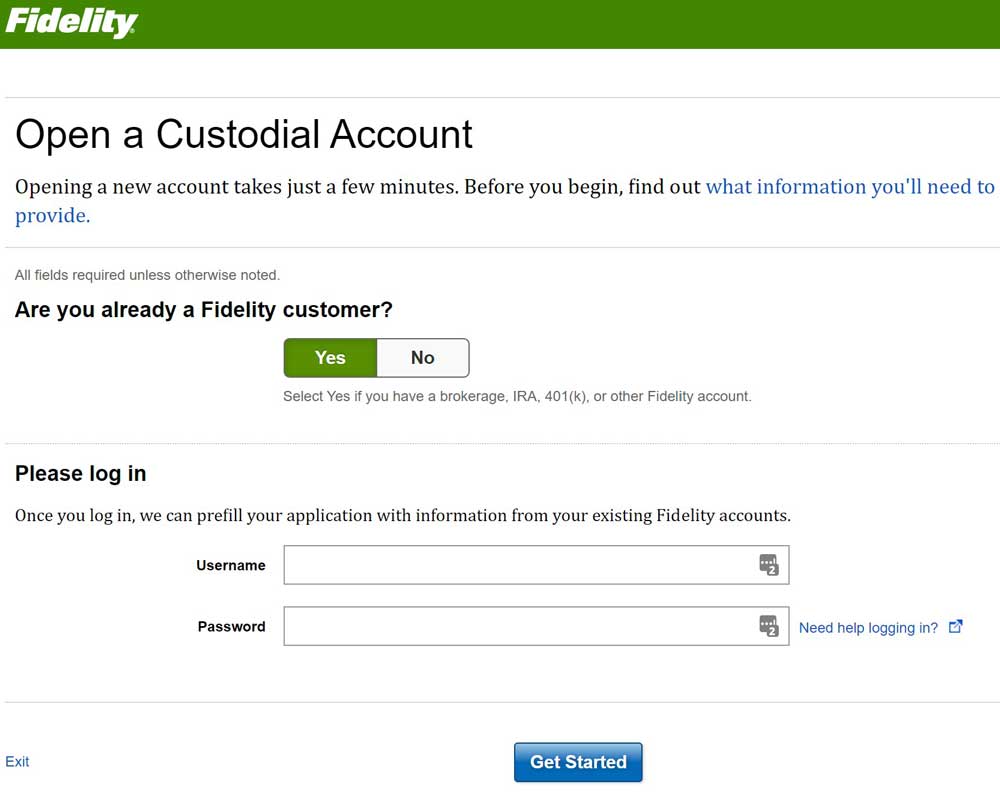Fidelity Custodial Account
Fidelity Investments has helped to bring investing to the masses. Now, it’s going one step further with its Youth™ Account. If you have a child or grandchild you want to introduce the world of investing to, you really need to read this article.
Overview of Fidelity Youth™
The Fidelity Youth Account is a taxable brokerage account for teenagers between the ages of 13 and 17. What really makes the account different from other adolescent financial accounts is that the teen on the account is the account owner with full control over the account. Although a parent or guardian must actually open the account, once the teen activates it, they have complete control over it, including the ability to trade securities and withdraw funds. The parent/guardian cannot perform either task, so this is a really unique account.
Nevertheless, the parent/guardian listed on the account does have some important controls over it. For example, parents have the ability to cancel the debit card on the account or close the account altogether. They can be listed as a trusted contact on the account. They also have inquiry access, which means they can review transactions and account statements. Fidelity has set up an allowance feature that allows parents to send their kids an allowance through the app.
Some notable features have been turned off in the Youth Account. There is no margin trading, for example, and securities cannot be gifted out of an account.

Available Investments
The Youth Account at Fidelity has a shortened list of asset classes. A curtailed selection of ETFs is available as are mutual funds from Fidelity. Most U.S.-listed stocks can be traded as well. Everything else is off limits. A Youth Account cannot trade penny stocks, fixed-income securities, cryptocurrencies, REITs, and several other asset classes.
Fidelity Youth Account Highlights
The Fidelity Youth Account comes with a debit card that can be used anywhere Visa is accepted. There is no checkwriting, however. A Fidelity money market fund, which yields close to 5% right now, can be set up as the core position in a Youth Account.
A special app must be used for the Youth Account (rather than the regular Fidelity app). It can be downloaded from either the Apple or Android store. Trades for securities can be placed on the app. The minimum purchase amount is just $1.
A Learn tab on the app hosts a selection of educational materials that both parents and teens can use. There are articles and videos.
There is an auto-save feature on the app that lets the account owner, who is the teen, put a percentage of incoming deposits towards a certain bucket, which is a goal for a future purchase of some kind.

Fidelity Youth Fees and Minimums
Keeping with Fidelity’s emphasis on low-cost investing and saving, a Youth Account comes with zero recurring fees, such as annual or inactivity charges. There is also no fee to open or close a Youth Account. There is no minimum deposit requirement.
The cherry on top here is the ability to actually make money with this account. To encourage teens to get involved, Fidelity offers bonuses for various activities. For example, Fidelity deposits a bonus of 5¢ into the account for every debit-card transaction. Referring a friend garners a $10 bonus. And completing educational lessons on the app can earn money, too.
Opening a Fidelity Youth Account
A parent or other guardian must open the Youth Account on behalf of the teen. That parent or guardian must have their own account at Fidelity. This required account can be opened before or with the Youth Account. Details on both the parent and teen must be provided on the application. Particulars include Social Security Numbers and some type of government-issued ID, such as a birth certificate or student ID.

Schwab as an Alternative
Two major drawbacks of Fidelity’s Youth Account are the lack of tax benefits and parental control
over trading. Both of these weak points are solved with an adolescent account at Schwab. The investment firm offers multiple types, including:
- Custodial Account
- 529 College Savings Plan
- Coverdell Education Savings Account
Each one has its own unique contribution and withdrawal rules. The Coverdell and 529 accounts require a pdf form to open, while a custodial account has an online application.

A third flaw intrinsic on the Fidelity account is the short list of investment vehicles. This deficiency is also solved at Schwab, at least with the custodial and Coverdell accounts. They come with the same lineup of investment products that regular brokerage accounts at Schwab have (including options and bonds and a much larger list of funds).

Schwab does not charge any recurring fees on its investment accounts for juveniles, and they have zero commissions on many trades. A 529 account will have a percentage-based annual fee.
Free Charles Schwab Account
Open Schwab Account
Updated on 10/3/2024.
|